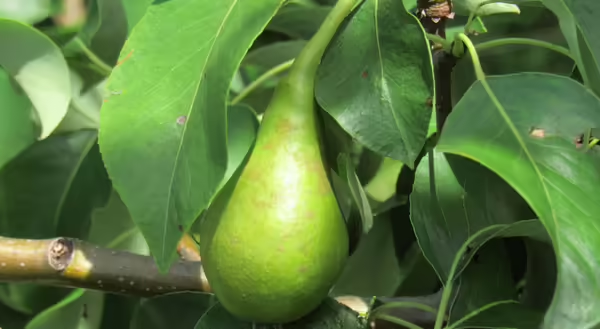
I don’t know about others, but I myself am fighting a case of the winter blues. My happy place is in the garden, looking at my growing plants—not snow!
As you daydream about your spring and summer garden, consider planting some unorthodox plants that are fueling a growing agricultural trend in the Midwest—agroforestry. There are a few different definitions of agroforestry floating around, I am partial to the following, the mixing of annual and perennial crops in a well thought out way. Here’s an illustrated example:
The mild humid air is filled with spring birdsong. It’s early morning and the asparagus crop is reaching full production. With a quick slice, the accompaniment to my morning eggs is in hand. How can growing food be so easy?
Another way of thinking about agroforestry is to think about mixing perennial crops – fruit and nut trees, fruit and nut bushes, berry vines, ground covers and more – on the same small piece of land, at multiple different levels of a simulated forest canopy. Basically, you want to produce something at each of those levels, for timber, food, or ecosystem services!
Another example:
- A western border of maple trees casting partial shade on a fruit orchard, containing apple, pear and other fruit trees.
- Between those fruit trees, a planting of shade tolerant perennials, such as rhubarb and black currant. Save sunny pockets for asparagus.
- And underfoot, a mat of red clover, for pollinators and to capture stormwater runoff. But better yet, lay a woodchip path to grow Garden Giant mushrooms!
Even if it’s just a fruit tree; an elderberry or black currant bush; or asparagus and rhubarb, an agroforestry growing space can feel like a return journey to a childlike imaginative state. Consider such a space with these classes of plants!
- Fruit/nut trees – for apples, pears, cherries, chestnuts, hazelnuts, persimmon
- Fruit/nut bushes – for black/white/red currants, serviceberries, hazelnuts
- Brambles – for blackberries, raspberries (yellow, red and black)
- Vines – for grapes
And don't forget the “big two” that everybody loves: asparagus and rhubarb!
If you’re interested in these concepts, check us out on The Refuge Food Forest Facebook page or watch “Practical Agroforestry” on the Local Food Systems and Small Farms Youtube channel.
If the installation or maintenance work causes hesitation, visit a local example this season:
The Refuge Food Forest, 701 E Lincoln St, Normal, IL 61761
PHOTO CREDIT: Ripening asian pear by Nick Frillman, University of Illinois Extension
ABOUT THE AUTHOR: Nick Frillman is a Local Foods and Small Farms Educator serving Livingston, McLean & Woodford counties. A fourth-generation graduate from University of Illinois, Frillman has a B.A. with a double major of Political Science and Spanish and a M.S. in Crop Science with a focus on crop production. Before joining Illinois Extension, Frillman completed a field season of CSA and farmers’ market style production at a small “beyond-organic” vegetable farm in Sandy, Oregon.